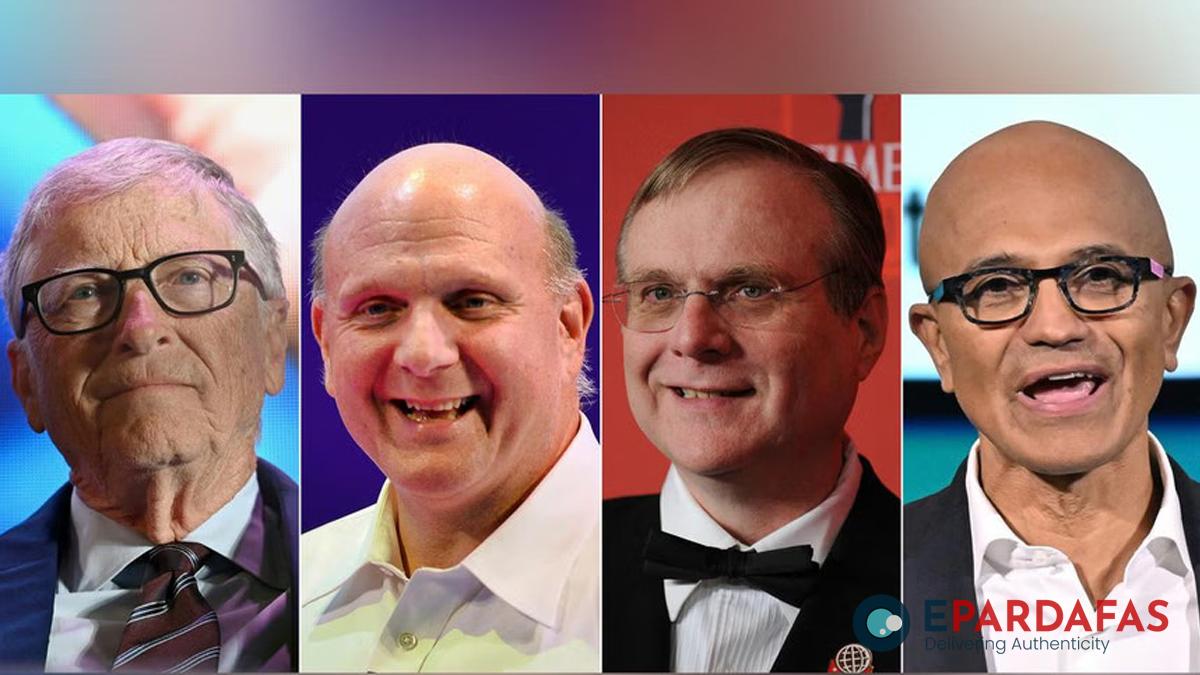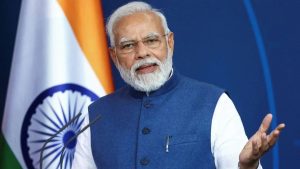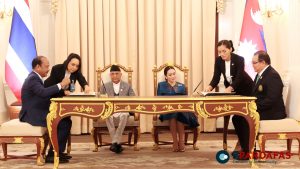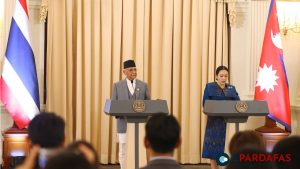
The Leaders Who Shaped Microsoft: Gates, Allen, Ballmer, and Nadella
Microsoft was shaped over the last half-century by Bill Gates, Paul Allen, Steve Ballmer, and Satya Nadella in the male-dominated tech world. Childhood friends in Seattle, Gates and Allen founded Microsoft in 1975 with the goal of putting a computer in every office and home.
Born William Henry Gates III in 1955 in Seattle, Gates began writing software programs as a 13-year-old schoolboy. He dropped out of Harvard in his junior year to start Microsoft with Allen. The duo created the MS-DOS operating system, later renamed Windows, which went on to dominate office work. Gates built a reputation as a formidable and sometimes ruthless leader, with critics arguing that he unfairly wielded Microsoft’s market clout, leading to a successful U.S. antitrust case against the company in the late 1990s.
In 2000, Gates ceded the CEO role to Ballmer, his former Harvard classmate, and later devoted himself to philanthropy with his then-wife, Melinda. He resigned from Microsoft’s board in 2020, shortly after the company acknowledged his past “intimate” relationship with an employee. The following year, Gates and Melinda divorced, with Melinda citing his association with disgraced financier Jeffrey Epstein. His advocacy for COVID-19 vaccines and climate-focused agriculture programs made him a frequent target of conspiracy theorists.
Paul Allen, born in 1953 in Seattle, was a schoolmate of Gates. At age 10, he started a science club at home and later bonded with Gates over computers. “Microsoft would never have happened without Paul,” Gates wrote in tribute after Allen died of cancer complications in 2018. Allen is credited with coining the name “Micro-Soft” by combining “microcomputer” and “software.” He left Microsoft in 1983 but remained on the board until 2000. Later, he accused Gates and Ballmer of scheming to “rip him off” by trying to acquire his shares while he battled cancer.
Ballmer, known for his aggressive salesmanship, helped drive Microsoft’s revenue but was criticized for lacking innovation. A Michigan native with a talent for mathematics, he graduated from Harvard and joined Microsoft in 1980. He was best man at Bill and Melinda Gates’ wedding in 1994 and took over as CEO in 2000. His energetic gestures, awkward dance moves, and voice-straining shouts became the stuff of internet memes and company lore.
During Ballmer’s tenure, Microsoft launched the Xbox gaming consoles, Surface tablets, and the Bing search engine. The company also acquired Skype and Nokia’s mobile division. However, Microsoft struggled to transition beyond PCs as the tech world shifted toward mobile and cloud-based software. His leadership saw major product failures, including the Zune music player, Kin mobile phones, and the Windows Vista operating system.
Satya Nadella took over as Microsoft’s CEO in early 2014, bringing a fresh vision for the company. Born in India, Nadella credits his leadership skills to playing cricket as a child. He was hired by Microsoft in 1992 while studying at the University of Chicago. Initially drawn to engineering, he later pursued computer science, which was not available at Mangalore University, where he first studied.
Nadella held various leadership roles at Microsoft, spanning research, business, server, and online services. He has a passion for poetry, which he likens to compressing complex data into rich ideas. Upon becoming CEO, he insisted that Microsoft had to embrace a “cloud-first, mobile-first world” to remain relevant.
One of his first major moves as CEO was ordering the largest reorganization in Microsoft’s history. Under his leadership, Microsoft transformed from a declining packaged software company into a dominant force in cloud services. The company has invested billions into artificial intelligence, partnering with OpenAI, the maker of ChatGPT, and integrating AI across its products.
Despite his successes, Nadella faced criticism early in his tenure when he suggested during a public discussion that working women should trust “karma” rather than actively seeking pay raises. Under his leadership, Microsoft made major acquisitions, including the purchase of Minecraft developer Mojang, the professional networking platform LinkedIn, and GitHub, a widely used platform for software developers.













Comments